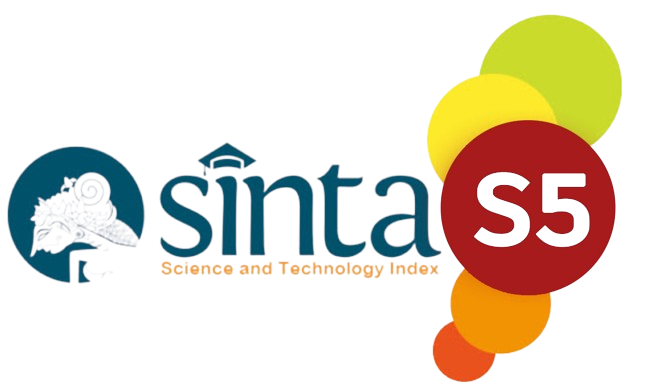The Effect of Self Organized Learning Environment (SOLE) Model Towards Students’ Critical Thinking Skills in Buffer Solution Topic
Abstract
Keywords
Full Text:
PDFReferences
Adeyemi, S. B. (2012). Developing Critical Thinking Skills in Students : A Mandate for Higher Education in Nigeria. European Journal of Educational Research, 3(2), 155–161.
Dores, O. J., Wibowo, D. C., & Susanti, S. (2020). Analisis kemampuan berpikir kritis siswa pada mata pelajaran matematika 1. JPiMat, 2(2), 242–254.
Ennis, R. H. (1984). The Nature of Critical Thinking. Informal Logic, 6(2), 1–8. https://doi.org/10.22329/il.v6i2.2729
Hake, R. R. (1998). Analyzing change/gain scores. Edukimia, 1(1), 16–22. https://doi.org/10.24036/ekj.v1.i1.a10
Marzano, R. J., Pickering, D., & McTighe, J. (1993). Assessing Student Outcomes: Performance Assessment Using the Dimensions of Learning Model.
Muhfahroyin. (2009). Memberdayakan Kemampuan Berpikir Kritis Siswa Melalui Pembelajaran Konstruktivistik. Jurnal Pendidikan Dan Pembelajaran (JPP), 16(1), 88–93.
Murnaka, N. P., Almaisurie, Q., & Arifin, S. (2019). Method on guided inquiry learning to improve students’ critical thinking abilities in facing the industrial revolution 4.0. International Journal of Scientific and Technology Research, 8(9), 439–441.
Ningsih, N. L. P. Y. W., & Suniasih, N. W. (2020). Kesiapan Belajar dan Aktualisasi Diri Meningkatkan Hasil Belajar IPA. Mimbar Ilmu, 25(3), 367–379.
Norrizqa, H. (2021). Berpikir Kritis dalam Pembelajaran IPA. Prosiding Seminar Nasional Pendidikan IPA, 147–154.
Nuraida, D. (2019). Peran Guru Dalam Mengembangkan Keterampilan Berpikir Kritis Siswa Dalam Proses Pembelajaran. Jurnal Teladan: Jurnal Ilmu Pendidikan Dan Pembelajaran, 4(1), 51–60.
Riduwan. (2019). Belajar Mudah Penelitian Untuk Guru-Karyawan dan Peneliti (Husdarta & Subandi (eds.); 6th ed.). Alfabeta.
Saepuloh, D., Sabur, A., Lestari, S., & Mukhlishoh, S. U. (2021). Improving Students’ Critical Thinking and Self-Efficacy by Learning Higher Order Thinking Skills Through Problem Based Learning Models. JPI (Jurnal Pendidikan Indonesia), 10(3), 495. https://doi.org/10.23887/jpi-undiksha.v10i3.31029
Saleh, S. E. (2019). European Journal of Foreign Language Teaching Critical Thingking As a 21 st Century Skill: Conceptions, Implementation And Challanges In The EFL Classroom. European Journal of Foreign Language Teaching, 4(1), 1–16. https://doi.org/10.5281/zenodo.2542838
Setianingsih, R., & Roshayanti, F. (2022). Kemampuan Berpikir Kritis Peserta Didik pada Pembelajaran Kimia dalam Pokok Bahasan Laju Reaksi di SMA Negeri 1 Bantarbolang. Jurnal Penelitian Dalam Bidang Pendidikan Dan Pengajaran, 16(1), 5–9.
Sirait, E. D. (2019). Pengaruh Gaya dan Kebiasaan Belajar Terhadap Kemampuan Berfikir Kritis Matematika. SAP, 4(1), 9–16.
Siti Zubaidah. (2010). Berfikir Kritis : Kemampuan Berpikir Tingkat Tinggi Yang dapat Dikembangkan Melalui Pembelajaran Sains. Seminar Nasional Sains 2010 Dengan Tema “Optimalisasi Sains Untuk Memberdayakan Manusia,” 16(January 2010), 1–14.
Suciati, S. (2021). Penerapan Model Pembelajaran Self Organized Learning Environments (SOLE) untuk Meningkatkan Pemahaman Materi Polimer. Ideguru: Jurnal Karya Ilmiah Guru, 6(3), 321–328. https://doi.org/10.51169/ideguru.v6i3.290
Suciono, W., Rasto, R., & Ahman, E. (2021). Analisis Faktor-Faktor yang Mempengaruhi Keterampilan Berpikir Kritis Siswa dalam Pembelajaran Ekonomi Era Revolusi 4.0. SOCIA: Jurnal Ilmu-Ilmu Sosial, 17(1), 48–56. https://doi.org/10.21831/socia.v17i1.32254
Sugiyono. (2019). Metode Penelitian Kuantitatif (Setiyawami (ed.)). Alfabeta.DOI: https://doi.org/10.24952/lavoisier.v4i1.14903
Refbacks
- There are currently no refbacks.
Copyright (c) 2025 Lutfi Sahitta Dewi, Sri Rahmania

This work is licensed under a Creative Commons Attribution-ShareAlike 4.0 International License.







Lavoisier:Chemistry Education Journal is licensed under a Creative Commons Attribution-ShareAlike 4.0 International License. Copyright © 2022 Lavoisier: Chemistry Education Journal.All rights reserved.


